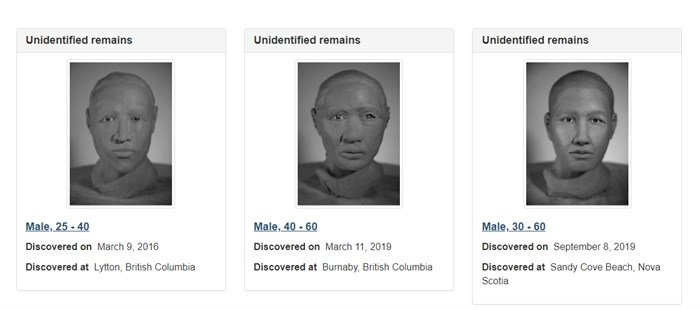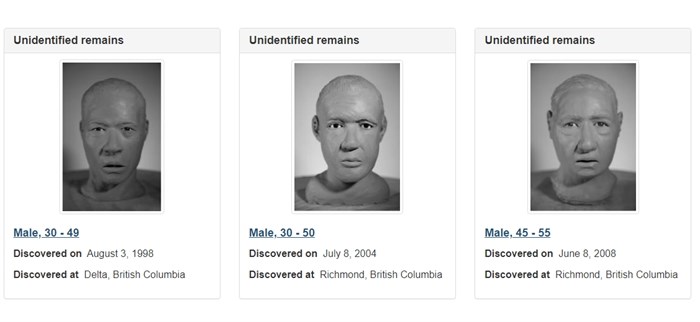
Using 3D-printing, skulls have been reconstructed in hopes of identifying the remains of cold cases in B.C.
Image Credit: RCMP
January 13, 2020 - 3:50 PM
The BC Coroners Service is combining art and science in a unique way to identity 14 victims of B.C. cold cases that date back to the 1970s.
“BC Coroners Service, RCMP, New York Academy of the Arts and the Nova Scotia Medical Examiner on a unique project that combines art and science and solicits help from the public to identify decedents using reconstructed faces,” according to a news release.
“The BC Coroners Service provided the RCMP with skulls from 14 unidentified human remains investigations in B.C. dating back to 1972. The skulls were then recreated with 3D printing and transported to the New York Academy of the Arts. Facial reconstruction was done by students in New York with the hope that, with the public's help, they will soon be able to put names to these faces,” the release said.
The reconstructed faces will go on display in New York in April 2020 as part of the New York Academy of Art's Open Studios event.

The BC Coroners Service is using 3D printing to identify victims in cold cases.
Image Credit: RCMP
"The 14 skulls provided by the BC Coroners Service as reference material are part of the B.C. inventory of cold cases," said Eric Petit, director, Special Investigations Unit, BC Coroners Service. "Specifically, these are investigations where we have reached an impasse in terms of identifying the deceased individuals."
Fifteen skulls were provided for the project, including one from Nova Scotia. Anyone who thinks they might recognize a face is asked to submit tips on the Canada's Missing website here.
"Our hope is that these reconstructions will trigger a memory that results in someone connecting with us or the RCMP, which will lead us to identifying these individuals. This collaborative project builds on other identification tools, including our unidentified human remains viewer, to help us close cold cases in our province," Petit said.
When human remains are found, investigators use a variety of methods to identify the person. They may compare the remains to descriptions of reported missing persons. They can send samples for DNA testing or search dental records.Often, these methods yield results, but when they are unsuccessful, police, coroners and medical examiners might turn to more creative methods.
“Students at the academy's forensic sculpture workshop reconstructed the faces under the guidance of Joe Mullins, a senior forensic artist with the National Center for Missing and Exploited Children in the U.S. The BC Coroners Service and the Nova Scotia Medical Examiner provided information such as sex, ethnicity and height for the unidentified human remains investigations... The students spent the week reconstructing the faces by applying clay to 3D-printed versions of actual skulls.”
To contact a reporter for this story, email Carli Berry or call 250-864-7494 or email the editor. You can also submit photos, videos or news tips to the newsroom and be entered to win a monthly prize draw.
We welcome your comments and opinions on our stories but play nice. We won't censor or delete comments unless they contain off-topic statements or links, unnecessary vulgarity, false facts, spam or obviously fake profiles. If you have any concerns about what you see in comments, email the editor in the link above.
News from © iNFOnews, 2020